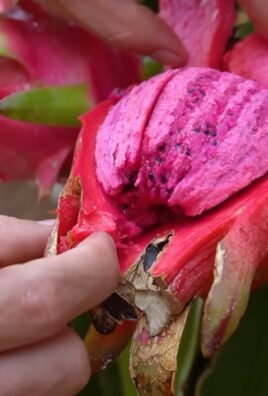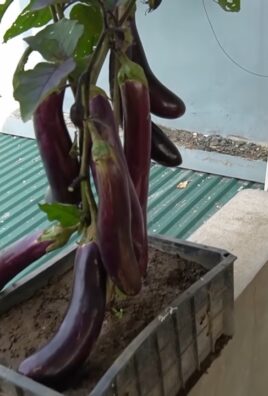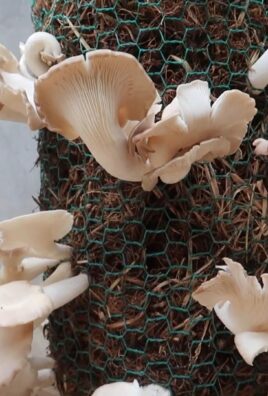Grow mung bean sprouts at home – it’s easier than you think, and I’m here to show you how! Forget those bland, pre-packaged sprouts from the grocery store. Imagine biting into crisp, fresh, and flavorful mung bean sprouts that you nurtured yourself, right in your own kitchen. Sounds amazing, right?
Sprouting beans has a rich history, dating back thousands of years in Asian cultures where they were valued for their nutritional benefits and ease of cultivation, especially during times of scarcity. Think of it as a tiny, edible garden, bringing a touch of ancient wisdom into your modern life.
But why should you bother to grow mung bean sprouts at home? Well, for starters, it’s incredibly cost-effective. A small bag of mung beans can yield a surprisingly large amount of sprouts. Plus, you control the entire process, ensuring they’re free from harmful chemicals and pesticides. More importantly, in today’s world, where we are increasingly conscious of where our food comes from, growing your own sprouts is a fantastic way to connect with nature and enjoy fresh, healthy food, even if you don’t have a garden. So, let’s dive in and unlock the secrets to sprouting success!

Grow Your Own Crunchy Mung Bean Sprouts: A Beginner’s Guide
Hey there, fellow sprout enthusiast! Are you ready to ditch the store-bought sprouts and embark on a super easy, super rewarding DIY adventure? Growing your own mung bean sprouts at home is not only incredibly simple, but it’s also a fantastic way to add fresh, nutritious crunch to your salads, stir-fries, and sandwiches. Plus, it’s seriously satisfying to watch those little guys spring to life! Let’s dive in!
What You’ll Need
Before we get started, let’s gather our supplies. The beauty of this project is that you probably already have most of these items lying around your kitchen.
* Mung Beans: Obviously! Look for whole, dried mung beans specifically sold for sprouting. You can usually find them at health food stores, Asian markets, or online. Avoid beans that are split or damaged.
* A Wide-Mouth Jar or Container: A quart-sized mason jar works perfectly, but any clean, food-grade container with a wide mouth will do.
* Sprouting Lid or Cheesecloth: You’ll need something to cover the jar and allow for drainage. A sprouting lid is ideal, but a piece of cheesecloth secured with a rubber band works just as well.
* Water: Clean, filtered water is best.
* A Dark Place: A cupboard, pantry, or even a covered box will do the trick. Darkness is key for optimal sprout growth.
* A Bowl or Tray: To place the jar in at an angle for drainage.
Step-by-Step Sprouting Guide
Okay, let’s get sprouting! This process takes about 3-5 days, so get ready for some quick gratification.
Phase 1: Soaking the Beans
1. Rinse the Beans: Pour about 1/4 to 1/2 cup of mung beans into your jar or container. Rinse them thoroughly under cool water, removing any debris or damaged beans. This step is crucial for removing any dust or impurities.
2. Soak the Beans: Add plenty of cool, filtered water to the jar – about 2-3 times the volume of the beans. Mung beans will expand significantly as they soak, so make sure they have enough room.
3. Cover and Let Soak: Cover the jar with your sprouting lid or cheesecloth and secure it with a rubber band. Place the jar in a dark place and let the beans soak for 8-12 hours, or even overnight. I usually soak mine before I go to bed, so they’re ready to go in the morning.
Phase 2: Rinsing and Draining
This is where the magic happens! Consistent rinsing and draining are essential for preventing mold and ensuring healthy sprout growth.
1. Drain the Soaking Water: After the soaking period, drain all the water from the jar. Use your sprouting lid or cheesecloth to prevent the beans from escaping.
2. Rinse Thoroughly: Rinse the beans thoroughly with cool, filtered water. Make sure to get all the beans wet and dislodge any loose hulls.
3. Drain Again: Drain all the water again, ensuring that no excess water remains in the jar. This is super important! Too much moisture can lead to mold growth.
4. Invert and Angle: Place the jar upside down in a bowl or tray at an angle. This allows any remaining water to drain out and provides good air circulation.
5. Repeat the Rinse and Drain: Repeat the rinsing and draining process 2-3 times per day. This is the most important step! Consistency is key. I usually do it in the morning, afternoon, and before bed.
6. Maintain Darkness: Keep the jar in a dark place between rinses. Remember, darkness encourages sprout growth.
Phase 3: Harvesting and Storing
After 3-5 days, your mung bean sprouts should be ready to harvest! They should be about 1-2 inches long and have a nice, crunchy texture.
1. Check for Readiness: Taste a few sprouts to make sure they have the desired crunch and flavor. If they’re not quite ready, continue rinsing and draining for another day or two.
2. Final Rinse: Give the sprouts a final rinse to remove any remaining hulls. You can gently rub them between your hands to help loosen the hulls.
3. Optional: Green Them Up: If you prefer greener sprouts, you can expose them to indirect sunlight for a few hours before harvesting. This will encourage chlorophyll production and give them a slightly greener hue. Be careful not to expose them to direct sunlight, as this can overheat them.
4. Drain Thoroughly: Drain the sprouts thoroughly to remove any excess water. This will help them last longer in the refrigerator.
5. Store in the Refrigerator: Store the sprouts in a clean, airtight container lined with a paper towel. The paper towel will help absorb any excess moisture. They should last for up to a week in the refrigerator.
Troubleshooting Tips
Even with the best intentions, sometimes things don’t go exactly as planned. Here are a few common issues and how to address them:
* Mold Growth: Mold is usually caused by insufficient rinsing and draining. If you see any mold, discard the entire batch and start over. Make sure to rinse and drain the beans more frequently in the future. Using clean equipment is also very important.
* Slow Growth: Slow growth can be caused by several factors, including low temperature, poor water quality, or old beans. Make sure you’re using fresh, high-quality beans and rinsing them with clean, filtered water. Also, try to keep the sprouts in a slightly warmer environment.
* Unpleasant Smell: An unpleasant smell is usually a sign of bacterial growth. This can be caused by insufficient rinsing or contaminated water. Discard the batch and start over, making sure to rinse and drain the beans thoroughly with clean water.
* Bitter Taste: A bitter taste can be caused by overgrowth or exposure to too much light. Harvest the sprouts earlier and keep them in a dark place.
Why Grow Your Own Sprouts?
Besides being incredibly easy and cost-effective, growing your own mung bean sprouts offers a ton of benefits:
* Freshness: Homegrown sprouts are always fresher than store-bought ones. You know exactly when they were sprouted and how they were handled.
* Nutrition: Sprouts are packed with vitamins, minerals, and enzymes. They’re a great source of protein, fiber, and antioxidants.
* Cost Savings: Growing your own sprouts is much cheaper than buying them from the store. A small bag of mung beans can yield a large quantity of sprouts.
* Sustainability: Growing your own sprouts reduces your reliance on commercially produced food and minimizes your environmental impact.
* Fun and Educational: Sprouting is a fun and educational activity for kids and adults alike. It’s a great way to learn about plant growth and healthy eating.
Beyond Mung Beans: Other Sprouting Options
Once you’ve mastered mung bean sprouts, you can experiment with other types of sprouts, such as:
* Alfalfa Sprouts: These are a classic sprouting option, known for their delicate flavor and high nutrient content.
* Broccoli Sprouts: These sprouts are packed with sulforaphane, a powerful antioxidant.
* Radish Sprouts: These sprouts have a spicy, peppery flavor that adds a kick to salads and sandwiches.
* Lentil Sprouts: These sprouts are a good source of protein and fiber.
* Chickpea Sprouts: Similar to lentil sprouts, these are a great source of protein.
Enjoy Your Homegrown Sprouts!
Now that you’ve successfully grown your own mung bean sprouts, it’s time to enjoy them! Add them to salads, stir-fries, sandwiches, wraps, or even smoothies. They’re a versatile and nutritious addition to any meal.
I hope this guide has inspired you to try growing your own mung bean sprouts at home. It’s a simple, rewarding, and delicious way to add fresh, healthy food to your diet. Happy sprouting!

Conclusion
So, there you have it! Growing your own mung bean sprouts at home is not just a fun project; it’s a game-changer for your kitchen and your health. Forget those limp, flavorless sprouts from the grocery store. With this simple DIY trick, you can cultivate crisp, fresh, and incredibly flavorful mung bean sprouts whenever you need them. The difference is truly remarkable.
Why is this a must-try? Because it puts you in control. You know exactly what you’re eating – no preservatives, no mystery ingredients, just pure, wholesome goodness. Plus, the cost savings are significant. A handful of mung beans yields a surprisingly large batch of sprouts, making it a far more economical option than buying them pre-packaged. And let’s not forget the satisfaction of nurturing something from seed to sprout, a small but rewarding connection to the food you eat.
But the benefits don’t stop there. Freshly grown mung bean sprouts are packed with nutrients, offering a boost of vitamins, minerals, and enzymes that are often diminished in commercially produced sprouts. They add a delightful crunch and subtle sweetness to salads, stir-fries, sandwiches, and even soups.
Ready to get creative? Consider these variations:
* **Spice it up:** Add a pinch of chili flakes to the soaking water for a subtle kick.
* **Experiment with beans:** While this guide focuses on mung beans, you can try sprouting other beans like lentils or adzuki beans, although the process and timing may vary slightly.
* **Flavor infusions:** Add a small piece of ginger or a clove of garlic to the sprouting jar for a subtle flavor infusion.
* **Different containers:** While a jar works great, you can also use a sprouting bag or a multi-tiered sprouting system for larger batches.
Ultimately, this DIY mung bean sprout method is about more than just saving money or eating healthier. It’s about empowering yourself to create fresh, delicious food at home, reducing waste, and connecting with the natural world. It’s a simple yet profound way to enhance your culinary experience.
We wholeheartedly encourage you to give this DIY trick a try. It’s easier than you think, and the results are well worth the effort. Once you taste the difference between homegrown and store-bought, you’ll never go back.
Don’t be shy! Share your sprouting adventures with us. Let us know how it went, what variations you tried, and what delicious dishes you created with your homegrown mung bean sprouts. We can’t wait to hear your stories and learn from your experiences. Happy sprouting!
Frequently Asked Questions (FAQ)
What exactly are mung bean sprouts, and why should I eat them?
Mung bean sprouts are germinated mung beans. They are a nutritional powerhouse, packed with vitamins (especially vitamin C and K), minerals (like iron and potassium), and enzymes. They are also a good source of fiber and protein. Eating them can boost your immune system, aid digestion, and contribute to overall health and well-being. Their crunchy texture and mild flavor make them a versatile addition to many dishes.
How long does it take to grow mung bean sprouts at home?
Typically, it takes about 3-5 days to grow mung bean sprouts at home, depending on the temperature and humidity in your environment. Warmer temperatures tend to speed up the sprouting process.
What kind of mung beans should I use?
Use whole, dried mung beans specifically intended for sprouting. You can usually find these at health food stores, Asian markets, or online retailers. Avoid using split mung beans or those that have been processed in any way, as they will not sprout.
Do I need any special equipment to grow mung bean sprouts?
No, you don’t need any fancy equipment. A wide-mouth jar (like a mason jar), a sprouting lid or cheesecloth, and a rubber band are all you need to get started. You’ll also need a dark place to store the jar during the sprouting process.
How often should I rinse the mung beans?
Rinse the mung beans at least twice a day, preferably three times a day, with fresh, cool water. This helps to keep them moist and prevents mold growth. Ensure you drain the water thoroughly after each rinse.
What if my mung beans start to smell bad?
A foul odor is a sign of bacterial contamination. If your mung beans start to smell bad, discard them immediately. This is usually caused by insufficient rinsing or poor drainage.
Can I eat the mung bean sprouts raw?
Yes, you can eat mung bean sprouts raw. However, some people prefer to cook them lightly to improve their digestibility. Lightly steaming, stir-frying, or blanching them for a minute or two is sufficient.
How long do mung bean sprouts last in the refrigerator?
Homegrown mung bean sprouts will typically last for about 3-5 days in the refrigerator. Store them in an airtight container lined with a paper towel to absorb excess moisture.
Are there any risks associated with eating mung bean sprouts?
While generally safe, there is a small risk of bacterial contamination with any raw sprouts. Thoroughly rinsing the sprouts before eating them can minimize this risk. Pregnant women, young children, and individuals with weakened immune systems should exercise caution and may prefer to cook the sprouts before consuming them.
My mung beans aren’t sprouting. What am I doing wrong?
Several factors can prevent mung beans from sprouting. Make sure you are using fresh, whole mung beans intended for sprouting. Ensure they are being rinsed and drained properly. The temperature may also be a factor; mung beans sprout best in a warm environment (around 70-75°F or 21-24°C). Also, ensure they are kept in a dark place during the sprouting process.
Can I grow mung bean sprouts in soil?
While you can technically grow mung beans in soil, this method is more akin to growing them as a crop rather than sprouting them for immediate consumption. The jar method is much faster and more efficient for producing sprouts.
How do I know when the mung bean sprouts are ready to eat?
The mung bean sprouts are ready to eat when they have a small tail (the sprout) that is about 1-2 inches long. The longer the sprout grows, the more the bean’s energy is converted into the sprout, potentially affecting the flavor and texture.
Can I use tap water to sprout mung beans?
Yes, you can use tap water, but if your tap water is heavily chlorinated, it’s best to use filtered water. Chlorine can inhibit the sprouting process.
What are some creative ways to use mung bean sprouts in my cooking?
Mung bean sprouts are incredibly versatile. Add them to salads for a crunchy texture, use them in stir-fries, incorporate them into spring rolls, top your sandwiches with them, or add them to soups for a refreshing crunch. They also make a great addition to Vietnamese pho or Korean bibimbap.
Is there a way to make the sprouts thicker and crunchier?
To encourage thicker and crunchier sprouts, ensure they have adequate weight on top of them during the sprouting process. This can be achieved by placing a plate or another jar on top of the sprouting jar. This added pressure encourages the sprouts to grow thicker and stronger.




Leave a Comment